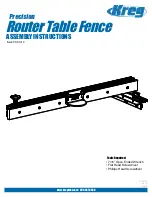
Supervisor Engine’s console port.
Tip Even though the LANE module is configured through the Supervisor Engine, the Supervisor Engine
maintains no configuration information regarding the LANE module. This information is stored on the
LANE module itself.
Segmentation and Reassembly
In a frame−based network such as Ethernet, packets sent on the physical wire require a minimum frame size.
Ethernet requires a minimum frame size of 64 bytes; this size is larger than an ATM cell, which is only 53
bytes with the header information included.
A process must occur to segment or reassemble the data into the needed minimum size for the physical media.
This is the job of segmentation and reassembly (SAR), which is a task performed by the Adaptation layer of
the ATM Reference Model. SAR is responsible for breaking frames into cells and padding cells to result in a
larger payload than the 48 bytes from the cells. This process allows the data in cells to traverse the local LAN
and meet the minimum frame size requirements.
Unfortunately, SAR is one area in which ATM switches fail to perform up to the standard of the physical
wire’s available bandwidth. As a result, SAR alone on the LANE module may have a problem processing
packets fast enough to keep up with frames or cells arriving and being sent on a 155Mbps OC−3. To resolve
this issue, Cisco installed two LSI ATMizers to provide low−latency and wire−speed performance on the
LANE module. Each ATMizer operates by itself—one is used for receiving, and the other transmits cells and
frames.
Tip The LANE module is capable of addressing 4,096 virtual circuits; however, the default is 1,024, which
provides sufficient capability for most installations. To provide for data bursts (associated with LANs and
not WANs), the LANE module SAR is capable of traffic shaping using a single−rate queue.
Connecting in an ATM Network
To provide a basis for troubleshooting, it helps to evaluate proper placement of the LES/BUS and LECS
components in your network. Most ATM LANE environments use LECS to provide configuration
information to the end−node. This connection uses a configuration direct VCC to query for a LECS. This
query uses three processes to try to locate the LECS, in the following order:
Checks the local LECS for a preconfigured address on the local LEC.
1.
Checks the ILMI to locate the LECS.
2.
Uses 47:00:79:00:00:00:00:00:00:00:00:00:00:00:00:A0:3E:00:01:00, which is the LECS’s
well−known address. This address is specified by the ATM Forum.
3.
After the end−node has contacted the LECS, the LES sends the end−node the information it needs to continue
contact with the LES. This information includes the operating information for the ELAN. The LES will
register the LEC and permit it to join the ELAN. The communication between the LEC and the LES is
established with the use of a join command on a bidirectional control direct VCC.
At this point, the LEC is responsible for locating the BUS. This is done through the use of an LE_ARP
request message. The LES responds to this request with the address of the BUS. The LEC then registers and
joins the BUS.
Now, when a client needs to send data to an unknown resource, the LES and BUS establish direct
communication to provide the address information and answer address queries. The LEC sends an LE_ARP
request to the LES for the destination station and also sends the initial data cells to the BUS, which will
forward the data cells to the destination and all the other stations.
177
Summary of Contents for Catalyst 1900 Series
Page 1: ......
















































